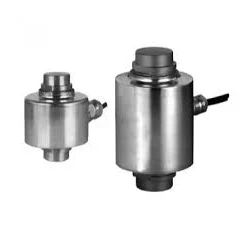What Is a Column Type Load Cell? Key Features and Engineering Uses

In industrial and civil engineering applications where heavy loads must be measured with precision and reliability, the choice of the right load cell becomes essential. Among the various types of load cells available, the Column Type Load Cell stands out as a top choice for high-capacity, vertical force measurement. Known for their durability, accuracy, and ability to perform in demanding environments, column type load cells are frequently used in sectors such as construction, logistics, and materials testing.
A Column Type Load Cell typically features a cylindrical design optimized for axial loading. It is engineered to handle large compressive forces while maintaining excellent linearity and repeatability. These load cells are commonly manufactured using high-strength materials and sealed to withstand harsh industrial conditions. For a detailed look at specifications and models suitable for heavy-duty applications, you can visit this Column Type Load Cell resource which outlines their design and applications in industrial systems.
Understanding Column Type Load Cells
Column type load cells are compression sensors designed to measure axial loads applied vertically. Their central column structure is surrounded by precision strain gauges that detect even the slightest deformation under load.
The cylindrical shape of these load cells provides inherent strength and uniform stress distribution, making them ideal for high-capacity measurements—often in the range of several tons to hundreds of tons. Most models are hermetically sealed and offer environmental protection to meet industrial-grade performance requirements.
Key Features of Column Type Load Cells
1. High Load Capacity
Column load cells are engineered to handle substantial vertical loads. Their structural design enables them to measure very high forces without compromising accuracy, making them perfect for heavy-duty and structural load testing.
2. Excellent Accuracy and Linearity
Thanks to their geometric symmetry and advanced strain gauge configuration, column type load cells offer high levels of accuracy and linear output. This ensures reliable and repeatable measurements, even under fluctuating load conditions.
3. Rugged and Durable Construction
Most column load cells are made from stainless steel or alloy steel, providing superior resistance to corrosion, mechanical wear, and environmental hazards. This construction makes them suitable for both indoor and outdoor use.
4. Compact Design
Despite their high load-bearing capacity, column type load cells maintain a relatively compact form factor. This allows for integration into confined spaces or systems with limited room for sensor installation.
5. Environmental Protection
Many models offer ingress protection ratings such as IP67 or higher, ensuring performance in dusty, wet, or chemically aggressive environments. Hermetic sealing and welded enclosures help protect the internal components from external damage.
Common Engineering Applications
Column type load cells are widely used across a broad spectrum of engineering and industrial applications. Their ability to deliver precise measurements under heavy load conditions makes them indispensable in several scenarios:
Structural Load Testing
Used in civil engineering projects to evaluate the load-bearing capacity of bridges, buildings, and support structures, column load cells provide accurate force measurements during testing phases.
Silo and Hopper Weighing
Column load cells are ideal for measuring the contents of large silos and hoppers. Placing the load cells under the support legs enables accurate and continuous weight monitoring, which is critical in inventory management and batching systems.
Weighbridges and Truck Scales
In transportation and logistics, column type load cells are commonly used in vehicle weighbridges to monitor the weight of trucks and trailers. Their high capacity and reliability are key to legal-for-trade applications.
Industrial Presses and Machines
These load cells are used in mechanical and hydraulic presses to monitor applied forces during forming, bending, or stamping processes, ensuring product consistency and equipment safety.
Aerospace and Defense
Column load cells are also employed in aerospace applications for testing structural components of aircraft or defense equipment under simulated high-load conditions.
Selection Criteria
When choosing a column type load cell for your specific application, consider the following factors:
- Rated Capacity: Choose a load cell that exceeds the maximum load expected in the application.
- Material Compatibility: Stainless steel offers the best corrosion resistance, especially for outdoor or marine environments.
- Output Type: Ensure the sensor provides a signal compatible with your data acquisition or control system, whether it’s millivolt, 4–20mA, or digital.
- Mounting Requirements: Check installation constraints and make sure the load cell’s dimensions fit the intended setup.
- Environmental Conditions: Select a load cell with the appropriate IP rating and sealing for exposure to dust, moisture, or chemicals.
Conclusion
The Column Type Load Cell is a robust and highly accurate force measurement solution for applications involving large vertical loads. Its cylindrical design, high load-bearing capability, and resistance to environmental stress make it ideal for industrial, construction, and scientific uses.







